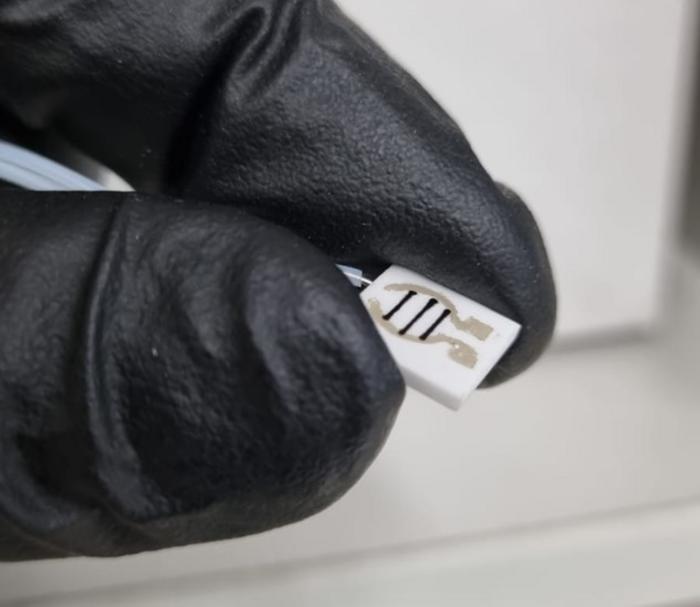In the realm of toxicology and chemical sensing, the differentiation between similar molecules can have life-saving consequences. Among these challenges, methanol poisoning represents a persistent and deadly public health threat, particularly in regions where illicitly produced alcohol contaminates beverages with this colorless and odorless toxin. The urgent need for rapid, non-invasive diagnostic tools has driven researchers to develop innovative sensing technologies that transcend traditional blood tests. Recently, a multidisciplinary team unveiled a groundbreaking prototype sensor capable of detecting methanol concentrations in human breath, heralding a new era in poisoning diagnostics.
Breathalyzers have long been the standard for quantifying ethanol levels in breath, providing an indirect measure of intoxication and blood alcohol content. However, contemporary devices lack the capacity to distinguish methanol from ethanol effectively. Methanol, though chemically similar to ethanol, is metabolized differently and more dangerously by the human body. The ingestion of methanol can result in metabolic acidosis, neurological damage, blindness, or death, contrasting significantly with the comparatively benign effects of ethanol consumption. Traditional methods to confirm methanol poisoning rely on laboratory analysis of blood samples, a process that demands specialized equipment and skilled personnel, thus limiting timely diagnosis in economically disadvantaged areas.
The research team, led by Dusan Losic, approached this intricate problem by integrating advanced materials science with machine learning. They engineered a conductive ink composed of a zirconium-based metal-organic framework (MOF) combined with graphene, an exceptional electrical conductor known for its sensitivity to molecular adsorption. This ink was then precisely deposited using 3D-printing technology onto a ceramic substrate, creating an ultrasensitive chemiresistive sensor. The fusion of MOF’s molecular sieving properties with graphene’s electrical responsiveness enabled selective detection of methanol molecules in the presence of ethanol and other volatiles.
To simulate realistic conditions akin to human breath, the investigators generated an artificial breath mixture containing controlled quantities of methanol vapor diluted in humid air. This approach permitted rigorous testing of sensor performance under dynamic, high-humidity environments that typically confound gas sensors. Impressively, the device demonstrated detection capabilities down to 50 parts per billion for methanol, surpassing the sensitivity requirements for clinical relevance. Moreover, repeated exposure experiments confirmed the sensor’s reproducibility and structural stability, highlighting its potential for repeated use in real-world applications.
One of the most formidable challenges was differentiating methanol from ethanol within the breath matrix, given their molecular similarity and the predominance of ethanol in alcoholic beverages. To surmount this, the team employed sophisticated statistical methods coupled with machine learning algorithms trained on sensor response patterns. These artificial intelligence tools dissected subtle electrical signal variations induced by different molecules, enabling the sensor to discriminate methanol at parts-per-billion levels and ethanol at parts-per-million thresholds. This dual-detection paradigm represents a novel strategy for enhanced selectivity beyond conventional sensor systems.
The implications of this development extend beyond methanol detection. The integration of MOF materials and graphene in printable electronic inks could revolutionize the fabrication of lightweight, portable gas sensors for myriad applications, including environmental monitoring, security screening, and medical diagnostics. The use of 3D printing technology offers scalability and precision manufacturing, which are critical for device commercialization and widespread dissemination.
Despite these promising advances, the researchers acknowledge that additional refinement is necessary before clinical translation. Exhaled human breath exhibits a complex and variable composition with high humidity exceeding typical laboratory settings. Achieving reliable methanol and ethanol differentiation in this milieu requires further sensor optimization and extended machine learning model training with real patient samples. Nonetheless, this study sets a critical foundation for future efforts toward rapid, non-invasive detection of toxic alcohol exposure.
Methanol poisoning remains a global health concern, particularly in low-income regions where regulation and testing resources are limited. By enabling swift on-site screening using a breathalyzer-like device, health professionals could initiate timely treatment interventions, potentially reducing morbidity and mortality rates. This sensor technology embodies a significant stride in bridging the gap between sophisticated laboratory diagnostics and accessible point-of-care testing.
Furthermore, the device’s ultra-sensitive detection could assist law enforcement and regulatory agencies in monitoring adulterated beverages, helping to curb the distribution of harmful alcohol products. The marriage of chemical sensor engineering and machine learning represents a powerful paradigm enabling nuanced interpretation of complex chemical signatures, a capability increasingly essential in biosensing technologies.
This research underscores the importance of multidisciplinary collaboration spanning chemistry, materials science, electronics, and artificial intelligence. The support from the National Intelligence and Security Discovery Grant as well as the Australian Research Council Research Hub for Advanced Manufacturing with 2D Materials fuels these cutting-edge innovations. As the technology matures, it holds immense promise to transform public health surveillance and forensic analysis associated with toxic alcohols.
In summary, the innovative combination of a zirconium-based MOF, graphene conductive ink, 3D printing, and machine learning algorithms has paved the way for a sensitive, selective, and potentially field-deployable methanol breathalyzer. This novel approach addresses longstanding challenges in the diagnosis of methanol poisoning with rapid, non-invasive detection, promising to save lives through early intervention. Continued development and validation with clinical samples will be crucial steps toward realizing deployment in real-world settings.
This pioneering work is set to appear in the June 2025 issue of ACS Sensors, marking a significant milestone in sensor technology and analytical chemistry. It vividly exemplifies how emerging materials and intelligent data analysis can converge to solve pressing global health problems, embodying the future of chemical sensing technologies.
Subject of Research: Development of an ultra-sensitive, machine learning-enhanced chemiresistive sensor for methanol detection in breath.
Article Title: Machine Learning-Enhanced Chemiresistive Sensors for Ultra-Sensitive Detection of Methanol Adulteration in Alcoholic Beverages
News Publication Date: 11-Jun-2025
Web References: http://dx.doi.org/10.1021/acssensors.4c03281
Image Credits: Kamrul Hassan
Keywords
Chemistry, Forensic analysis, Sensors, Alcoholic beverages




